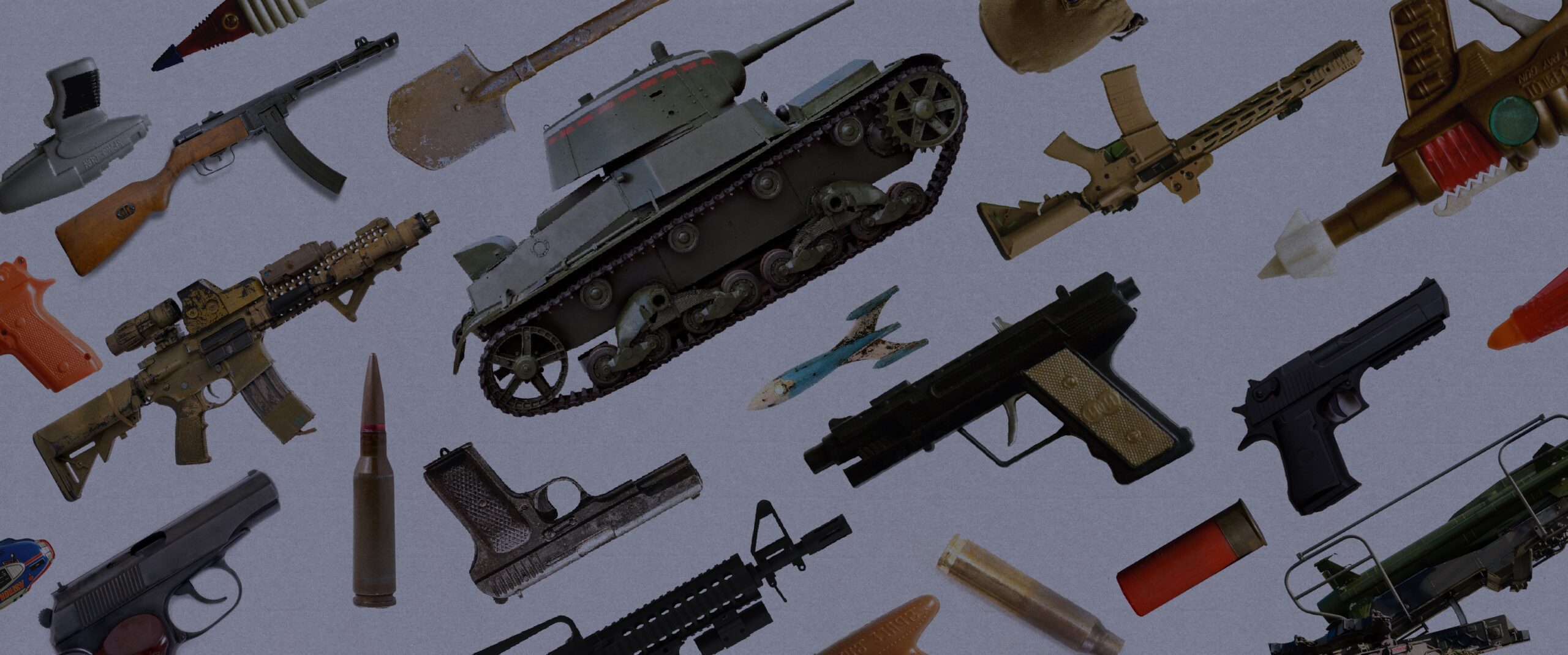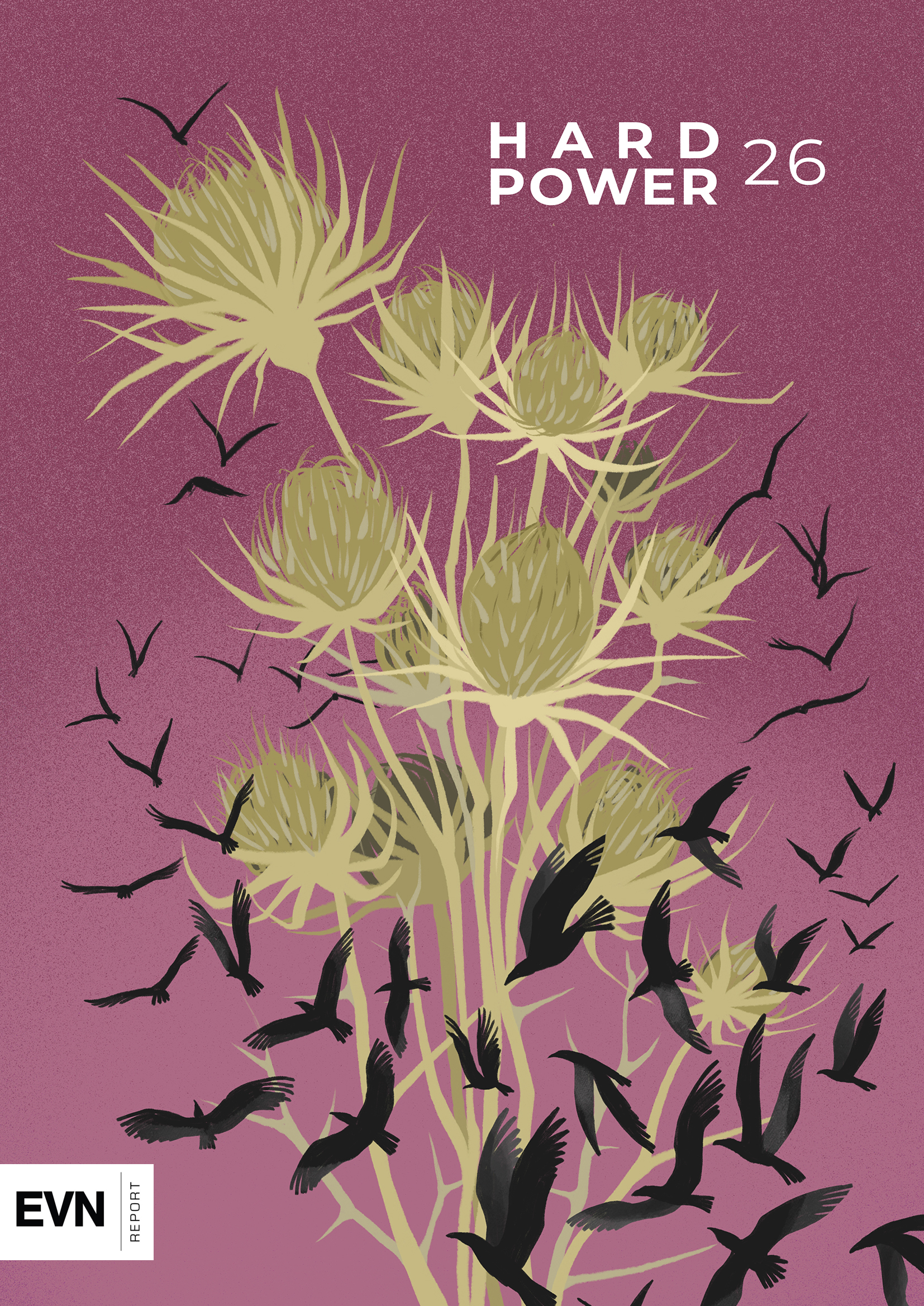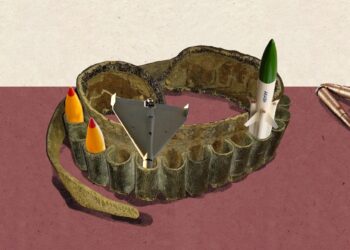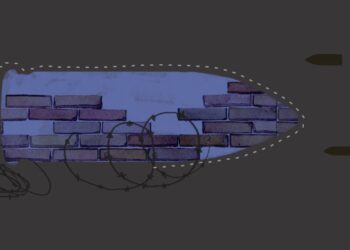
Note: An earlier version of this article was originally published on February 17, 2021.
For more than three decades, Armenia and Azerbaijan have been embroiled in a conflict over Artsakh (Nagorno-Karabakh), including two full-scale wars in 1992–1994 and 2020 and regular skirmishes in the interwar period and beyond. The conflict has led to both countries becoming among the world’s most militarized. A 2019 report by the Bonn International Centre for Conflict Studies ranked Armenia and Azerbaijan as the 3rd and 10th most militarized countries, respectively. Moreover, Artsakh has been described as one of the world’s most militarized areas.
For three decades, Armenia and Azerbaijan have bought large quantities of weapons from a variety of foreign sources as neither has a significant domestic arms industry. The Stockholm International Peace Research Institute (SIPRI), a research institute dedicated to conflict and armaments, has estimated that between 2011 and 2020, the volume of Azerbaijan’s weapons acquisitions exceeded Armenia’s more than eight times.
The complete list of armament suppliers to Armenia and Azerbaijan may never be known, but based on data available in open sources, a comprehensive list of weapons acquired by both countries since their independence was assembled for this article. Unless otherwise noted, the source is the trade register of SIPRI, which includes the deals “if reliable information has been verified that an order has been placed or deliveries have begun.” It uses open sources, including press reports, official reports, and the UN Register of Conventional Arms (UNROCA), which receives annual reports on exports and imports of major arms from most UN member states.
Soviet Inheritance
Both countries inherited the Soviet military assets present in their territories. Azerbaijan had an early advantage over the Armenian side in terms of equipment. Azerbaijan had 436 tanks against Armenia’s 77; 558 vs. 150 infantry fighting vehicles (IFV); 389 vs. 39 armored personnel carriers (APC); 388 pieces of artillery against 160; 63 warplanes against three. Armenia had supremacy only in the number of helicopters: 13 against Azerbaijan’s eight. The Karabakh Armenian military inherited at least some of the equipment of the 366th Motor Rifle Regiment based in Stepanakert.
Russian Supplies to Armenia
Russia has supplied the vast majority of Armenia’s armaments. SIPRI estimated that in 2011–2020 nearly 94% of Armenia’s arms imports came from Russia.
Russia began supplying weapons to Armenia during the later stage of the First Nagorno-Karabakh War, in 1993, and provided a long list of equipment through the first two post-war years, in 1995 and 1996. Weapons transferred to Armenia in this period include: nine 2K11 Krug surface-to-air missile (SAM) systems with 349 missiles; 945 Fagot anti-tank missiles; 40 missiles for the Osa SAM systems; 84 T-72 tanks; 18 D-1, 18 D-20, and 36 D-30 howitzers; 18 BM-21 Grad multiple rocket launchers (MRLs); eight Scud-B (Elbrus) short-range ballistic missile launchers with 24 missiles; 40 Igla SAM launchers with 200 missiles; four BRDM-2 tank destroyers, and 50 BMP-2 infantry fighting vehicles (IFVs).
SIPRI labels all Russian supplies between 1993 and 1996 as “illegal transfers”. The covert supplies were disclosed in 1997 by Russian parliamentarians and officials, causing a domestic scandal and tensions with Azerbaijan. They were first revealed in February 1997 by Aman Tuleyev, Russia’s Minister for Cooperation with CIS Countries, and later confirmed by Defense Minister Igor Rodionov. The legality of these transfers prompted investigations within Russia’s Defense Ministry and by military prosecutors. Azerbaijani President Heydar Aliyev demanded the issue be discussed at the CIS summit in late March. To ease tensions, Russia extradited Surat Huseynov, Aliyev’s chief opponent, to Azerbaijan while the summit kicked off in Moscow. Azerbaijan agreed to not discuss the issue until the end of the Russian investigation, while Azerbaijan’s ambassador to Russia blamed former Defense Minister Pavel Grachev, former Chief of the General Staff Mikhail Kolesnikov and Fyodor Reut, commander of the Group of Russian troops in Transcaucasia, for the transfers.
In early April 1997, retired general Lev Rokhlin, at the time Chairman of the Duma’s Defense Committee, claimed that the total value of Russian arms transfers to Armenia stood at $1 billion. This figure was later confirmed by military prosecutors.
Russian authorities distanced themselves from the supplies, denying any prior knowledge. Vladimir Putin, then head of the presidential administration’s oversight department, said that President Boris Yeltsin had issued a decree banning any supplies to Armenia and Azerbaijan in the fall of 1993 and it was still in effect and that Yeltsin had instructed the Prosecutor General’s Office to investigate the transfers. Putin said prosecutors were given specific names, which did not include Grachev as his department did not find any documents that would indicate that he gave direct orders. Yeltsin put an end to the scandal when at the CIS Summit in Chisinau in October 1997, he stated that he had fired all those responsible for the “illegal transfers” of arms to Armenia.
During the revelations, Kommersant, a leading Russian newspaper, insisted that the arms transfers must have happened with Yeltsin’s knowledge and approval and argued that Russia may have supplied the arms in exchange for Armenia’s decision to keep the Russian base in Gyumri. In a 1996 speech to a small circle of close allies, posted online in 2019, Armenia’s then-Defense Minister Vazgen Sargsyan stated that Russian army units stationed in Armenia served as channels for bringing 905 railroad cars of arms and ammunition via Georgia. According to Sargsyan, by 1996 Armenia had three times more weapons than it had inherited from the Soviet military in 1992. The number of Armenia’s tanks alone rose from 120 to over 300.
Russian supplies effectively halted for the next decade. During the presidency of Robert Kocharyan, Armenia received only two Ilyushin Il-76 transport aircraft in 2004. Russia began supplying Armenia again in large numbers beginning in 2009, a year after Serzh Sargsyan took over as president. In 2009–2010 Armenia acquired its most potent air-defense systems: two S-300s with 144 missiles. Between 2013 and 2017, Armenia secured 400 Igla and 200 Verba surface-to-air missiles; four Iskander ballistic missile systems with 25 missiles, which constitute Armenia’s most powerful missiles to date; six Smerch multiple rocket launchers, and 100 Kornet anti-tank missiles. In 2014, Armenia won a T-90S tank at a Russian tank competition, which it received in 2016. Regnum reported in March 2018 that Armenia acquired its first electronic warfare (EW) systems from Russia, called Repellent, at least one of which was destroyed in the first days of the 2020 war.
After Nikol Pashinyan came to power, Armenia acquired more modern weapons, including two Tor SAM systems with 50 missiles, and four Su-30SM fighter aircraft, which were delivered by 2019. The jets cost Armenia $120 million, but included no missiles as Pashinyan admitted after the war. Samvel Babayan, former commander of the Artsakh Defense Army and Secretary of Artsakh’s Security Council during the 2020 war, claimed that the Armenian side had six Tor systems, though this cannot be verified.
During the 2020 war, Armenia may have used Russian-produced Orlan-10 reconnaissance UAVs. Movses Hakobyan, Armenia’s former Chief of the General Staff and Chief Military Inspector during the war, claimed that Russian-supplied Polye-21 electronic warfare (EW) systems disrupted Azerbaijan’s drones for four days. There was also speculation that Russia had supplied Krasukha-4 EW systems, but this remains unconfirmed.
In January 2022, Armenia received four Mi-8MTV-5 military transport helicopters from Russia, which according to SIPRI, Armenia had bought in 2020.
Armenia’s Other Suppliers
Besides Russia, Armenia has acquired weaponry from a dozen other countries, with many supplying second-hand Soviet/Russian-made hardware.
In 1999, China sold Armenia four WM-80 multiple rocket launchers, which became Armenia’s first non-Soviet/Russian arms purchase. Reported by Armenia to the UN Register, it was China’s first arms sale to any of the countries in the South Caucasus. In 2013, an Armenian military source told RFE/RL that Armenia had acquired AR-1A MRLs from China. They are the Chinese variant of the Russian Smerch MRLs. According to a report by a Russian think tank, China delivered six launchers to Armenia in 2011.
In 2004, Armenia bought ten second-hand Su-25 jets from Slovakia for $8 million. Ukraine supplied two L-39C Albatros trainer aircraft in 2004 and four more in 2010–2011. Ten and 16 D-30 howitzers were acquired from Belarus in 2007 and Montenegro in 2010, respectively.
In July 2020, during the skirmishes in Tavush, Azerbaijan accused Serbia of supplying Armenia weapons. It was eventually confirmed by Serbian officials that the country did supply Armenia light weapons (rifles and pistols) worth less than a million euros in May and June of 2020. Armenia has Yugoslav- and Serbian-made equipment in its arsenal, including dozens of Zastava M55 AA anti-aircraft guns, mounted on Soviet MT-LB armored vehicles, mortars (M57, M69, M74, M75), M93 Black Arrow anti-materiel rifles, and 122mm G-2000 rockets used for the Grad MRLs. In the UN Register, for 2010 Bosnia declared the supply of 200 mortars of calibers less than 75 mm to Armenia. During the 2020 war, Azerbaijan claimed to have captured Iraqi-made mortars from the Armenian side, but they were likely produced in Bosnia.
In 2011, after media claims, the government of Moldova confirmed that military equipment had been exported to Armenia. According to Moldovan press reports, the supplies included: Shturm, Fagot, and Malyutka anti-tank missile systems, S-8 rockets with B-8M1 launchers, 152 mm shells, test and control equipment for the Kobra and Konkurs-M anti-tank missiles, a large number of missiles for the Konkurs and Metis anti-tank systems, and, most notably, BM-27 Uragan MRLs.
Armenia received four Soviet-made Osa-AK SAM systems in 2019 from Jordan with 120 missiles. The systems were shown to Pashinyan in December 2019. Jordan has denied the reports and suggested that the sale “might have been made by private companies that bought weapons from Jordanian defense industries.”
India is Armenia’s newest and an increasingly important arms supplier. In March 2020, several Indian outlets reported, citing government sources, that Armenia had purchased four Swathi counter-battery radars for $40 million. They were reportedly airlifted to Armenia in January 2021. More reports of weapons purchases from India came in the fall of 2022. In September, Armenia reportedly obtained Pinaka multiple rocket launchers, anti-tank missiles, and ammunition for more than $244 million. These reports were essentially confirmed by Prime Minister Pashinyan and the chairman of a Pinaka developer. According to The Economic Times, Armenia is set to receive four Pinaka batteries with six launchers each. In November 2022, Indian outlets also reported the sale of 155mm mounted gun systems to Armenia. It will include four-to-five regiments with 18-20 howitzers in each according to one source.
Razm.info, a website with ties to the Armenian military, spotted MILAN anti-tank missiles, a joint production of Germany and France, at a 2012 military exhibition in Yerevan. It cited a Russian source as reporting that Armenia had bought the missiles from Greece in 2012, and they were supplied in 2013. Anonymous sources within the Azerbaijani military claimed in 2013 that Armenia had not only bought 20 MILAN missiles from Greece, but also machine guns and grenade launchers from Greece and Cyprus in the past two years. The Greek embassy in Baku denied the reports.
In October 2020, the EU launched its online database of arms exports of its member states since 2013. Between 2013 and 2020, EU member states collectively exported €46 million worth of military technology and equipment to Armenia. Bulgaria accounts for more than 97% of exports to Armenia at €44.9 million, with ammunition at €42.2 million, and rockets and missiles at €2.2 million. In the UN Register, Bulgaria declared the sale of 1,094 light machine guns in 2017 and 500 disposable RPG-22 anti-tank rocket launchers in 2019 to Armenia.
Arms Supplies to Azerbaijan
Unlike Armenia, Azerbaijan has a diversified arms trade market. Its main suppliers are Russia and Israel, but it has purchased a significant amount of arms from Ukraine, Belarus, Turkey, and a number of other countries.
Russia has been one of Azerbaijan’s major arms trade partners. According to SIPRI, it accounted for 60% of Azerbaijan’s arms imports in 2011–2020 (80% in 2009–2013 and 31% in 2015–2019). Russia’s first known weapons sales to Azerbaijan were 62 T-72 tanks and 70 BTR-80 infantry fighting vehicles (IFVs) in 2007–2010. In 2009–2010, Azerbaijan received 100 Kornet anti-tank missiles. Russian supplies increased greatly in the 2010s. In 2013, President Ilham Aliyev claimed that the “military and technical cooperation with Russia is measured at $4 billion.”
In 2011, Russia delivered two S-300 surface-to-air missile systems along with 200 missiles for $300 million. Azerbaijan purchased 24 Mil Mi-24 combat helicopters for $360 million and 66 Mil Mi-17 transport helicopters, which Russia delivered between 2010 and 2015. The latter are also used, besides the military, by Azerbaijan’s border guards and police.
Between 2012 and 2018, Russia exported 18 Smerch and 36 TOS-1 MRLs, 100 T-90 tanks, 118 BMP-3 and BTR-82 IFVs and armored personnel carriers (APCs), 18 MSTA self-propelled howitzers, 18 Vena self-propelled mortar systems, some 1,000 Bastion anti-tank missiles, 24 Khrizantema-S tank destroyers with 800 missiles, 200 Igla-S SAM launchers with 1,000 missiles, and two Buk SAM systems with 200 missiles.
According to one report, Israel supplied Stinger man-portable air-defense systems (MANPADS) during the First Nagorno-Karabakh War. Since the mid-2000s but especially in the 2010s, Israel became a major arms supplier to Azerbaijan. In 2016, Aliyev claimed that Azerbaijan had purchased defense equipment worth $4.85 billion from Israel. SIPRI estimates that Israeli exports accounted for 27% of Azerbaijan’s arms acquisitions in 2011–2020 (and 60% just in 2015–2019).
In 2006, Israel delivered six Lynx MRLs and 50 EXTRA guided missiles for the Lynx launchers in 2008–2009. Azerbaijan received five ATMOS-2000 self-propelled gun systems in 2008, ten CARDOM self-propelled mortar systems in 2010–2011, ten Sufa armored personnel vehicles (APVs) in 2009–2010, and 100 Spike-MR/LR guided anti-tank missiles in 2009–2010.
Between 2016 and 2018, Israel supplied 100 SandCat APVs, ten Spike-LR and another 250 Spike-MR/LR missiles and ten SPEAR mortars, which are mounted on the SandCats. Azerbaijan further acquired one Barak-LR SAM system with 80 Barak-8 missiles and 100 LAHAT anti-tank guided missiles; four LORA MRLs with 50 guided surface-to-surface missiles.
Israel has supplied a number of UAVs and loitering munitions (“kamikaze drones”). Four Aerostar UAVs were delivered in 2008 and another ten in 2011–2012. Between 2011 and 2018, Azerbaijan received ten Hermes-450, five Heron, five Searcher, ten Orbiter-3, two Hermes-900 reconnaissance drones. Azerbaijan acquired 80 Orbiter-1K, 50 IAI Harop, and 100 SkyStriker loitering munitions between 2015 and 2019.
Israel has also supplied equipment for Azerbaijan’s navy, which operates in the Caspian Sea. Between 2014 and 2018, Azerbaijan received six OPV-62 and Shaldag fast attack crafts (FAC) and 250 Spike-NLOS missiles for the warships. In 2014–2016, Israel delivered two EL/M-2288 AD-STAR naval radars. In October 2020, Haaretz, a leading Israeli newspaper, reported that Israel continues to supply arms to Azerbaijan, which was confirmed by open source data.
Ukraine was among Azerbaijan’s first arms trade partners. In 1993–1994, the latter phase of the First Nagorno-Karabakh War, Ukraine delivered 150 T-55 tanks. Ukraine also supplied MiG-21 fighter jets, a fact revealed by a captured Ukrainian mercenary pilot.
The SIPRI database shows that Ukraine supplied a large number of arms to Azerbaijan between 2002 and 2013. Almost all were second-hand Soviet equipment. Ukraine delivered 72 T-12 towed guns, 55 D-30 howitzers, 45 T-72 tanks, 12 Smerch MRLs, two BMP-1 IFVs, three BTR-3, 18 BTR-80, and 150 BTR-70 armored personnel carriers. Azerbaijan further received 23 BTS-5B armored recovery vehicles and 85 M-43 mortars. Ukraine also supplied a large number of self-propelled guns, including 54 Gvozdikas, three Pions, and 16 Akatsiyas. Azerbaijan received 400 R-2 anti-tank missiles in “for portable Skif anti-tank systems and for Barrier (Baryer) systems (from Belarus and Ukraine) on Mi-24 combat helicopters modernized to Mi-24G.” Ukraine delivered 18 Strela-3 MANPADS, and 43 R-27 beyond-visual-range air-to-air missiles (BVRAAM).
Azerbaijan also acquired equipment for its air force from Ukraine, including 12 L-39C Albatros trainer aircraft in 2006, 16 MiG-29 fighter jets in 2006–2011, and 12 Mil Mi-24/Mi-35 combat helicopters in 2009–2010.
Another post-Soviet country with a large arsenal of Soviet-made weapons, Belarus, which is also Armenia’s formal ally within the Russia-led Collective Security Treaty Organization (CSTO), has supplied a significant amount of weapons to Azerbaijan since 2006. Belarus sold 153 T-72 tanks in two batches in 2005–2006 and 2011–2013. In 2008–2009, Belarus delivered 12 Pion self-propelled guns and 30 D-30 and 26 Giatsint-B howitzers in 2010 and 2017, respectively. Azerbaijan acquired 11 Su-25 jets in 2009–2012. Belarus’ most significant arms sale to Azerbaijan was the locally-produced Polonez MRLs, which have a firing range of 200 km. Belarus delivered ten Polonez systems in 2018–2019. Belarus reportedly delivered Polonez missiles to Azerbaijan in October 2020, at the height of the 2020 Artsakh War.
Though Turkey has been Azerbaijan’s closest political ally since the early 1990s, it did not become a significant supplier of armaments until the 2010s. During the First Nagorno-Karabakh War, Turkey provided only a “limited amount of military supplies through clandestine channels,” wrote Turkish analyst Sabri Sayarı. In 2000, Turkey made its first sale included in the SIPRI database, when it supplied an AB-25 patrol craft to Azerbaijan. In 2010–2011, Azerbaijan purchased 72 armored personnel vehicles (APVs), including 35 Cobras and 37 Shorlands. Between 2011 and 2016, Turkey supplied 90 self-propelled MRLs, including 30 T-107s, 40 T-122 Sakaryas, and 20 TRG-300 Kasirgas. In 2016–2017, Azerbaijan received 108 guided rockets for the T-122s and T-300s. In 2018–2019, Turkey supplied ten SOM-B1 air-to-surface missiles.
During the 2020 Artsakh War, Azerbaijan deployed Bayraktar TB2 UAVs, which were likely operated by Turkish crews. The number of Azerbaijan’s Bayraktars has been variously estimated at five, six, or “likely 10 or more.” Satellite images taken in October 2020, during the war, showed at least two Turkish F-16 fighter jets were stationed in Azerbaijan, first at the Ganja airport, then at the Gabala airbase.
Though Pakistan has been a staunch supporter of Azerbaijan diplomatically, Azerbaijani-Pakistani arms trade is limited. In 2018, Pakistan delivered ten MFI-17 Super Mushshak trainer aircraft. Azerbaijan has acquired an unknown number of Pakistani 122mm KRL MRLs. This was first revealed during the 2020 war, when two were destroyed and Azerbaijan later showcased one in action.
Azerbaijan has purchased a large number of armored personnel carriers (APCs) from South Africa. Between 2009 and 2015, it supplied 60 Matador and 85 Marauder APCs, which were assembled in Azerbaijan. In 2009–2010, South Africa delivered ten turrets for the modernization of the Mil Mi-24 helicopters from Ukraine.
The Czech Republic sold Azerbaijan 30 RM-70 MRLs in 2017–2018, which were delivered via Slovakia and Israel. An investigation found that 54 Tatra 815 trucks were first sent to Israel and then back to Slovakia, where they were turned into functional DANA self-propelled howitzers and RM-70 launchers, and then exported to Azerbaijan via Israel to bypass the OSCE arms embargo on Azerbaijan. In his 2017 visit to Armenia, Milan Štěch, president of the Czech Senate, stated that the Czech authorities have not agreed to the export of Czech weapons to Azerbaijan. In the UN Register, Slovakia has declared two minor sales to Azerbaijan, including a T-72 tank in 2002 and a 30mm 2A42 cannon in 2010. SIPRI lists 36 DANA howitzers, mentioned above, as having been exported from Slovakia to Azerbaijan in 2017–2018.
According to the EU arms exports database, in 2013–2020, Bulgaria exported €227.5 million worth of arms to Azerbaijan, mostly ammunition (€218 million) and rockets and missiles (€5.9 million). It has declared to the UN Register the supply to Azerbaijan of 36 M-46 towed guns in 2002, 10 UBGL grenade launchers in 2015, and 156 Bulspike anti-tank rocket launchers in 2020.
Azerbaijan has acquired military equipment in smaller quantities from other countries. Georgia delivered six Su-25 jets in 2002. Although the SIPRI database does not indicate any arms transfer from Serbia to Azerbaijan, Serbia’s President Aleksandar Vučić stated in August 2020 that his country has sold “ten times more weapons to Azerbaijan” than to Armenia. For 2010, Bosnia declared in the UN Register the supply of 20 Croatian-made RAK-12 MRLs and 20,000 rockets to Azerbaijan. Spain sold Azerbaijan a Lanza-LTR long range radar in 2019. Spain declared a sale of €19.5 million worth of “imaging or countermeasure equipment, specially designed for military use” in the EU database, which is presumably the price of the radar. Other EU member states have exported arms to Azerbaijan in smaller volumes, including the Czech Republic (€7.3 million), Romania (€5.3 million), Croatia (€2.7 million), and Italy (€2.6 million).
The OSCE Embargo, France and the United States
Western countries have generally refrained from supplying lethal or offensive weaponry to Armenia and Azerbaijan, but official data released by the EU, the UK, and the U.S. show defense sales, including arms supplies, to both Armenia and Azerbaijan.
There is also a voluntary OSCE embargo on arms deliveries (February 1992) still in effect. It asks all members to “impose an immediate embargo on all deliveries of weapons and munitions to forces engaged in combat in the Nagorno-Karabakh area.” SIPRI notes that the request “does not apply to arms deliveries to the countries as a whole” and countries have interpreted this differently. Germany prohibits all arms exports to both countries.
In July 2014, the UK “refined its interpretation” of the OSCE embargo as covering the export of military equipment that “could be used” in Nagorno-Karabakh or on the land border between Azerbaijan and Armenia. In October 2020, Action on Armed Violence (AOAV), a British research group, revealed that since 2010, the UK Department for International Trade had approved the sale of “security exports” with £86 million to Azerbaijan and only £4.2 million to Armenia. The UK has exported “aerial target equipment, assault rifles, machine guns, pistols, small arms ammunition and targeting equipment” to Azerbaijan and “military vehicles, gun silencers and small arms ammunition” to Armenia.
France
France, too, has said it follows the OSCE embargo. The French ambassador to Azerbaijan stated in 2021 that his country “fully respects the long-standing restrictive measures imposed by the OSCE regarding exports of weapons to Armenia and to Azerbaijan.” At the same time, France has declared defense exports to Azerbaijan of €140.2 million and €8 million in 2015 and 2016, respectively. France has only exported a little over €4,000 worth of arms to Armenia in 2013.
The EU database does not provide details for France’s almost €150 million exports to Azerbaijan, but it is likely the cost of the Spot 7 Earth observation satellite Azerbaijan acquired from France-based Airbus Defence and Space in December 2014. The satellite, renamed AzerSky, is operated by the state-owned Azercosmos agency. Azerbaijan’s Communications and High Technologies Minister has stated that the AzerSky program cost €157 million, a figure close to the French export. The satellite has many uses, including military, and Azerbaijan has claimed that it was utilized during the 2020 Artsakh War. “When we launched the satellites into orbit, some people asked why this was necessary. But life has shown that we need it very much. Both during the war and in the post-war period, satellites gave us a great advantage,” President Aliyev stated in January 2021.
United States
Between July 1993 and March 2002, both Armenia and Azerbaijan were included in the list of proscribed destinations of the International Traffic in Arms Regulations (ITAR), which banned exports and imports of defense articles and services, destined for or originating in Armenia or Azerbaijan. Both countries were removed from the list by the Bush administration “in the interests of foreign policy and national security.”
Besides this decade-long ban, the U.S., under Section 907 of the Freedom Support Act (1992), prohibits assistance to the government of Azerbaijan “until the President determines, and so reports to the Congress, that the Government of Azerbaijan is taking demonstrable steps to cease all blockades and other offensive uses of force against Armenia and Nagorno-Karabakh.” A decade later, in 2002, Congress enacted a provision allowing the President to waive Section 907 on an annual basis. It was first exercised by the Bush administration in 2002 and has been extended each year since then. It may be waived if the President determines that to do so is necessary to support U.S. efforts and the operational readiness of the U.S. military and partners to counter international terrorism; is important to Azerbaijan’s border security; and “will not undermine or hamper ongoing efforts to negotiate a peaceful settlement between Armenia and Azerbaijan or be used for offensive purposes against Armenia.”
According to a 2022 report by the U.S. Government Accountability Office (GAO), in fiscal years 2002 through 2020 the United States has provided Azerbaijan around $164 million in security assistance identified by officials as requiring the Section 907 waiver. GAO found that in 2014–2021 the Departments of State and Defense “did not document how they determined that their programs would not be used for offensive purposes against Armenia.” The Pentagon-funded programs have included “training and equipment for the Azerbaijani government to promote nonproliferation and increase border security, especially along the border with Iran and the Caspian Sea.” The GAO report noted that while according to Pentagon officials the DoD’s programs providing assistance to the Azerbaijani government “are designed so that the assistance cannot be used for offensive purposes against Armenia,” the DoD “did not consistently document consideration of this or any other Section 907 waiver provision in its program assessments.”
At a Senate hearing in November 2022, Assistant State Secretary Karen Donfried insisted that American security assistance is “non-lethal border security that has provided significant results countering transnational threats from Iran and disrupting smuggling routes to the South Caucasus, Russia and Europe.” There are caveats, however. In 2019, Emil Sanamyan, a fellow at the USC Institute of Armenian Studies, argued that security assistance has implications for Armenia through Azerbaijan’s Border Guards Service, which was assigned in 2018 to a part of the Azerbaijan-Armenia border, allowing the military to be used elsewhere on the Line of Contact. Sanamyan also noted that the border guards and “other U.S.-assisted military units have taken part in hostilities against Armenian forces.”
According to Security Assistance Monitor, a program of the think tank Center for International Policy (CIP), the United States has, since 2000, provided over $222 million to Armenia and more than $419 million to Azerbaijan in security assistance. The figure for Azerbaijan is two-and-one-half times as much as the assistance requiring the Section 907 waiver as reported by the GAO ($164 million). Security Assistance Monitor also collects data from various agencies on United States arms sales. Between 2003 and 2021, $46.7 and $72.9 million in arms were delivered to Armenia and Azerbaijan, respectively.
According to the 2021 Historical Sales Book of the Pentagon’s Defense Security Cooperation Agency (DSCA), the U.S. has sold nearly equal amounts of “defense articles or services” to Armenia and Azerbaijan. The data indicates that Armenia has received $51.1 million in military sales, with Azerbaijan at $56.6 million. These sales are within the scope of the Foreign Military Sales (FMS) program, which uses the Defense Department’s acquisition system to procure and transfer defense articles, services, and training on behalf of its partner countries and international organizations. Defense articles include military equipment and armament. Neither Security Assistance Monitor nor the DSCA report on the specifics of what, if any, lethal arms have been sold to either country.
Conclusion
The vast majority of Armenia’s military equipment has been supplied by Russia since the early 1990s. Russia has also delivered a considerable amount of arms to Azerbaijan. Armenia has purchased small quantities of weapons from China and India, but there is a growing cooperation with the latter. A number of countries have sold to both sides, including Ukraine, Belarus, Bulgaria, Serbia, Montenegro, Bosnia, the Czech Republic, and Slovakia, mostly supplying second-hand Soviet-era equipment. Azerbaijan’s chief suppliers, besides Russia, Ukraine and Belarus, have been—especially since the 2010s—Israel and Turkey.
Magazine Issue N26
Hard Power
After Armenia’s heavy defeat in the 2020 Artsakh War, the country continues to be in a very precarious security environment. Hopes for a peaceful settlement with Azerbaijan have been dashed by Baku’s ongoing aggressive behavior and hybrid warfare tactics. Baku has been using its military advantage to increase pressure on both Armenia and Artsakh and under these circumstances, Armenia’s hard power toolbox must be strengthened to address the ongoing security challenges.
This month’s magazine issue entitled “Hard Power” features articles on the concept of hard power, the necessity to create territorial defense forces, reforms and professionalization of Armenia’s Armed Forces, Armenia’s quest to procure arms and the role of women in the military.
Military Reforms Amid Ongoing Security Threats
Armenia’s defeat in the 2020 Artsakh War highlighted the need to reform the country’s entire military system, from command to education. While authorities claim that reforms are underway, lack of clarity and transparency has become a critical problem.
Read moreMothers and Soldiers: A Woman’s Place in Armenian Defense
With many Armenians sensing that their country is facing an existential threat from its neighbors, more and more women are looking for ways to defend their country, beyond motherhood, writes Karena Avedissian.
Read moreArmenia’s Quest to Procure Arms
Since the 2020 Artsakh War, Armenia has faced an uphill battle of recovering and upgrading its arsenal. The latest Azerbaijani invasion in September 2022, made the complexities of arms procurement, and the endeavor of doing so independent of Russia, central to Armenia’s strategy.
Read moreBuilding Armenian Territorial Defense Forces
Attempts are being made to carry out military reforms as well as to form a capable Territorial Defense Force in Armenia, but these processes have been progressing slowly, writes defense analyst Leonid Nersisyan.
Read moreMagazine Issue N25
Reflection
Armenia’s Tech Sector in 2022
The global tech sector in 2022 was turbulent. The trend for venture capital investments shows that investors were much more cautious. What does this mean for the Armenian startup ecosystem?
Read moreLegislative Initiatives in 2022: From a Ban on Smoking to the Creation of a New Ministry
In 2022, laws adopted in previous years came into force and others were brought before parliament and enacted. Here is a wrap-up of some of the most significant pieces of legislation that Armenia’s parliament adopted this year.
Read moreArmenia: Security Hinged on Diplomacy
Against the backdrop of its failed security architecture and Azerbaijan’s ongoing hybrid warfare tactics over the past year, Armenia endeavored to “diplomatize” its security by engaging in active diplomacy.
Read moreArtsakh: A Year of Continued Attacks and Ongoing Blockade
Over the past year, Artsakh faced periods of heightened tensions as Baku continued its policy of harassment and terror including a blockade that has cut off the 120,000 residents of Artsakh from Armenia and the rest of the world.
Read moreMagazine Issue N24
Soft Power
The Art of Negotiation: Towards New Cultural Strategies
In the context of ongoing regional strife in the Caucasus, the understanding of culture as an instrument of political agency and negotiation becomes especially vital as a mode of resistance and reinforcement for all the parties involved. Vigen Galstyan explains.
Read moreThe TUMO Phenomenon: Exporting Innovative Education to the World
As one of Armenia’s intellectual and technology exports, TUMO has become a symbol of the country’s potential to innovate at a global scale. TUMO’s executive team share their thoughts on the significance of the program’s global expansion.
Read moreAmerican and Russian Soft Power in Armenia
The United States has been projecting soft power in Armenia since the early days of independence; and while Russia has utilized its language and cultural heritage as soft power instruments, it still prefers coercive methods over soft power.
Read moreSoft Power, the Community of States and Armenia
In this article, political scientist Georgi Asatryan, reviews the academic literature on the theory of soft power and then considers it in the context of Armenia.
Read moreMagazine Issue N23
N.E.W.S .
Magazine Issue N22
Cease, Fire


















